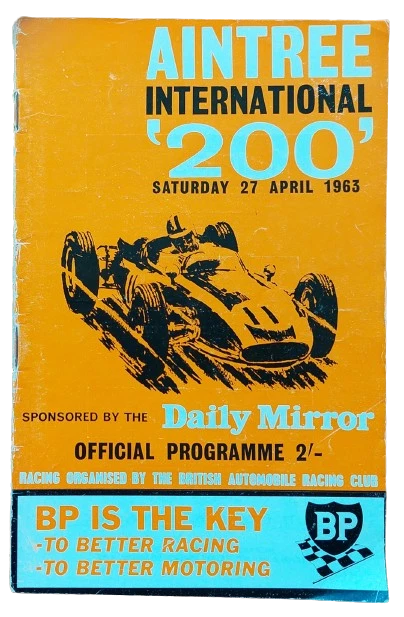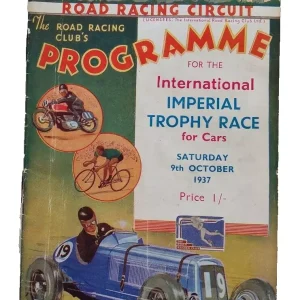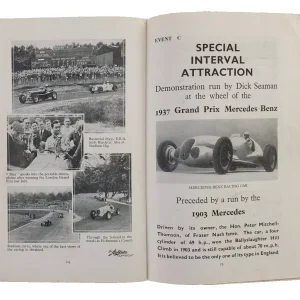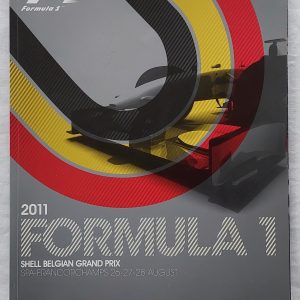Description
The1963 Aintree International 200 Race Programme details the 1963 Aintree International 200 which was a non-championship event that took place on April 13, 1963. The 42-lap, 82-mile race featured a field of 20 Formula One cars, with Graham Hill’s BRM P57 taking pole position. The race was won by John Surtees’ Ferrari 156A, who finished over 2 minutes ahead of the second-placed car.
1963 Aintree International 200 Race Programme
The “1963 Aintree International 200 Race Programme” is a classic and highly sought-after souvenir that offers a detailed glimpse into one of the most exciting motor racing events of the early 1960s. Held at the legendary Aintree Circuit, located in Merseyside, England, this race was a premier event in the European motorsport calendar and attracted some of the most talented drivers and innovative cars of the era. The programme encapsulates the anticipation, glamour, and competitive spirit that defined the 1963 race day, making it an essential collector’s item for motorsport enthusiasts.
Visually, the programme features vibrant artwork and photographs of the Aintree Circuit, along with images of the participating race cars and drivers. Its layout combines practical race information with evocative imagery, capturing the excitement and atmosphere of a bustling race day. Inside, it provides a comprehensive schedule of events, starting from practice sessions to race timings, helping spectators navigate the day’s proceedings with ease.
A major highlight of the 1963 Aintree International 200 Race Programme is the detailed profiles of the drivers and teams competing in the 200-lap race. These include notable names like Jim Clark, Jack Brabham, and Bruce McLaren, among others. Each profile offers insights into their racing careers, previous achievements, and personal backgrounds, providing fans with a more intimate connection to the stars of the event. Equally important are the technical specifications of the cars, including details about engine types, chassis, and performance characteristics, which reflect the rapidly advancing automotive technology of the period.
The 1963 race itself was filled with drama and high-speed action, as drivers battled not only each other but also the challenging Aintree circuit, known for its fast straights and tricky bends. The event was marked by strategic pit stops and technical prowess, with the competition often swinging back and forth between leading contenders. The programme highlights these moments, emphasizing the skill, bravery, and precision required from the drivers.
In addition to race details, the 1963 Aintree International 200 Race Programme contains advertisements from automotive manufacturers and sponsors, providing a nostalgic glimpse into the business and marketing practices of the era. Photographs from previous races, race maps, and notes on the history of Aintree racing further enhance its value as a collector’s item.
Overall, the 1963 Aintree International 200 Race Programme stands as a nostalgic testament to a golden age of motorsport — a richly detailed, beautifully illustrated document that celebrates the speed, innovation, and rivalry that made the race a landmark event in British and international racing history.







Reviews
There are no reviews yet.